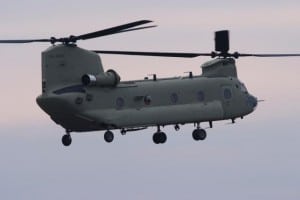
The Army is considering the next step for the CH-47F Chinook helicopter, produced by Boeing [BA], to provide more capability and lift and keep the heavy lifter relevant in coming years, officials said. Col. Rob Barrie, project manager, Cargo Helicopter, said Block 2 is still ill-defined, but it would likely be some package of engineering change proposals and/or next generation aircraft modifications. Barrie said the user community is plugged in with industry partners and working to keep the helicopter sustainable…













